/Dev TFT: K.O. Coliseum Learnings
Welcome Coliseum contenders to our once-a-set deep dive into just that: the set. Our K.O. Learnings is a collaboration across many disciplines and devs where we go over what worked, what didn’t, and everything in between. This is a big one and you’ll hear from the following people as they reflect on how the set landed:
Michael “TheDjinn” Sloan: K.O. Coliseum Set Lead. TFTer since Gizmos & Gadgets, set designer since Monsters Attack!
Tim “Truexy” Jiang: Live Designer on Finalization and Live Team Lead for K.O. Coliseum
Giovanni Scarpati: Lead Designer for Roles Revamped. Some claim he is a super Thresh fan.
Tori Ero: Gameplay Art Director. She’s worked on everything from Little Legends to Logos.
Isaac Wood: Art Lead for K.O. Coliseum. Recently made the observation that Christina and Tim have the same last name, but doesn’t believe they are related.
Christina “xtna” Jiang: Product Lead for Events since the first Choncc’s Treasure
A bit of a meta note. We’ve been doing these Learnings articles for a long time now, and throughout that time, we’ve returned to some of the same issues that have cropped up in the past (e.g. bugs). This isn’t to say that we haven’t learned from those mistakes—we know they’re still there, but instead it’s to call out that we are continuing to work on them, or add color to why they are still appearing. The reality is that making a game isn’t easy, so we’d rather continue to discuss the areas we’re struggling most with and keep you updated on those ongoing struggles than ignore them entirely. Plus, there are new things to talk about in those sections too. So, with that, a TL;DR:
Power Ups: On release, the set mechanic was praised for its dynamic and fun nature, making a champion feel like an anime protagonist. But as the set evolved, the system’s complexity, high knowledge burden, and inconsistent options revealed a need for clearer tuning and more emphasis on agency and flexibility.
Flexibility: K.O. Coliseum was not as flexible of a set as we would like, and while we worked to improve flex play throughout the later patches, we failed to hit the mark for many of our competitive players. As we look to the next set, we’re taking extra care to make sure our traits feel viable at lower breakpoints, allowing for wider gameplay. We can also guarantee that there will be far more flexible champions in the next set.
Sharp and Meaningful Design - Reflections on Artifacts: Artifacts have created balance challenges for a while, as their power made certain champions feel mandatory or unplayable without them. Going forward, we’re aiming to lower the power gap between champions with and without their go-to Artifact—making them less extreme and more flexible across a broader range of champions.
Bugs, Ambition, Content, and the Pioneer Tax: We created a ton of ambitious new content with more combinations than ever before, but the “Pioneer Tax” (concept of things going wrong when you try something new) of building something new—combined with compressed timelines and resources—led to fewer finalization days and more bugs.
Lulu: A Case Study for Complexity: Here we tell the story of Monster Trainer, an ambitious but flawed experiment that taught us hard lessons about aligning design goals, managing complexity, and maintaining polish while still pushing for innovation.
Prismatic Traits Reflections: Some wins, some losses here, but overall we’re going to reserve quest style gameplay for just a few Prismatics and be more intentional about it in the future.
Roles Revamped Reflections: This was a success, and we’ll be feeling the impact of this system change in future sets as well!
The Style of an Anime Tournament: K.O. Coliseum’s anime style brought new visual tech and personality to the set. Some of the biggest wins here are the Top Four ceremony and cell-shader styling.
Ao Shin’s Ascent: Ao Shin’s Ascent was our first real crack at a PvE progression based mode, and we're both happy with the results and feel like we've learned a lot, and have a lot left yet to learn. We don't yet have solid plans for what we may next explore in a similar space, but if & when that changes, we'll keep you updated.
Power Ups
The set mechanic for K.O. Coliseum had the goal of taking your favorite champion and giving them the ability to become your anime protagonist with sharp and strong enhancements that could be moved around throughout the game. Here’s how it landed.
In our survey sent out in the first two patches of the set, a large portion of our players said that Power Ups made the set more fun—in fact, Power Ups scored above the Anomaly mechanic of Into the Arcane, but below our Augment mechanic from Gizmos & Gadgets, which was so popular that we just added it to the game permanently. Overall, players who enjoyed Power Ups appreciated having new ways to customize their champions, with novel options like partnered Power Ups (Drift Duo, Fan Service) being noted most frequently.
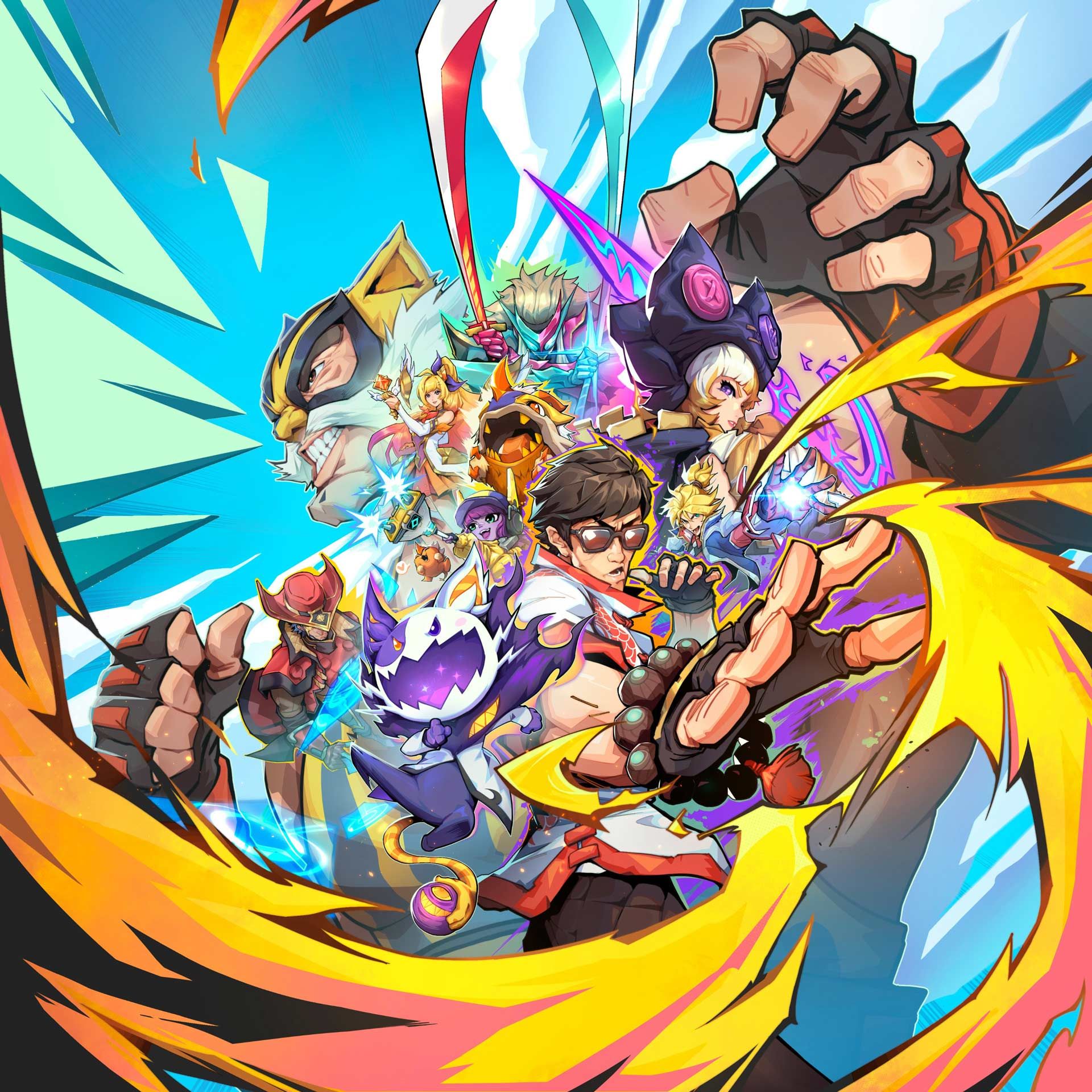
But as time went on, things changed. Power Ups are a dynamic and complex system. With over 100 options that could be mixed and matched across more than 60 different champions, there is an overwhelming amount of possibilities. And even if we got to a world where all these were somehow balanced, when interacting with other elements in the game (Augments, Items, Champion kits), the reality of the situation is that some Power Ups would be far better with other champs/system combos than others. All this being said, the sheer magnitude of combinations is tough to balance. And while having them be completely balanced may be a far-reaching goal, what we should have done better is removing the bad options such as Super Genius, a Power Up balanced around Prodigy’s Mana regen on Karma, or Killer Instinct on Malzahar, which sort of just gave him Mana Regen. On the flip-side we also should have been faster at removing options that broke a champion’s Power Ceiling such as Stretchy Arms on Gangplank, Fusion Dance Darius, or Trickster (insert melee champion). There were too many options that either weren’t viable for too long or were way too dominant, creating rigid and meta optimized situations that hurt the fantasy of Power Ups in the first place.
Because we had so many Power Ups that were generic, we needed to be more careful that when we applied a Power Up to a champion, it would need to apply a similar level of power to all champions of that type. Having a Power Up work well on one unit but not another of the same role dramatically increased the knowledge burden on the mechanic An example where this went wrong would be Fairy Tail Ezreal being much worse than Fairy Tail Kog’Maw, but the fact that it is offered on both champions leads you to believe that these are equivalent. This is where we needed to dial in the scaling numbers on our Power Ups, while also ensuring our Power Up lists were both intuitive (with no dead options) and balanced (with no Power Up that broke a champion).
Another thing Power Ups brought up was how much agency feels good. You had enough options where it was reasonable to fish for the Power Up you wanted, but if you missed, it would feel especially bad. We sort of cut the difference between allowing players to completely select their Power Up versus making them build around the few options they were given in a similar way that Augments provide. There are pros and cons to both of these options, but when we examine systems like this in the future, we need to decide more meaningfully where we ultimately stand on this continuum.
With that said, Power Ups were obviously an exciting system for many of our players, so I’d be remiss if I didn’t call out some of the more meta learnings we’ve taken from the system and to do so, I’ll break down Power Ups for one champion in specific: Lucian.
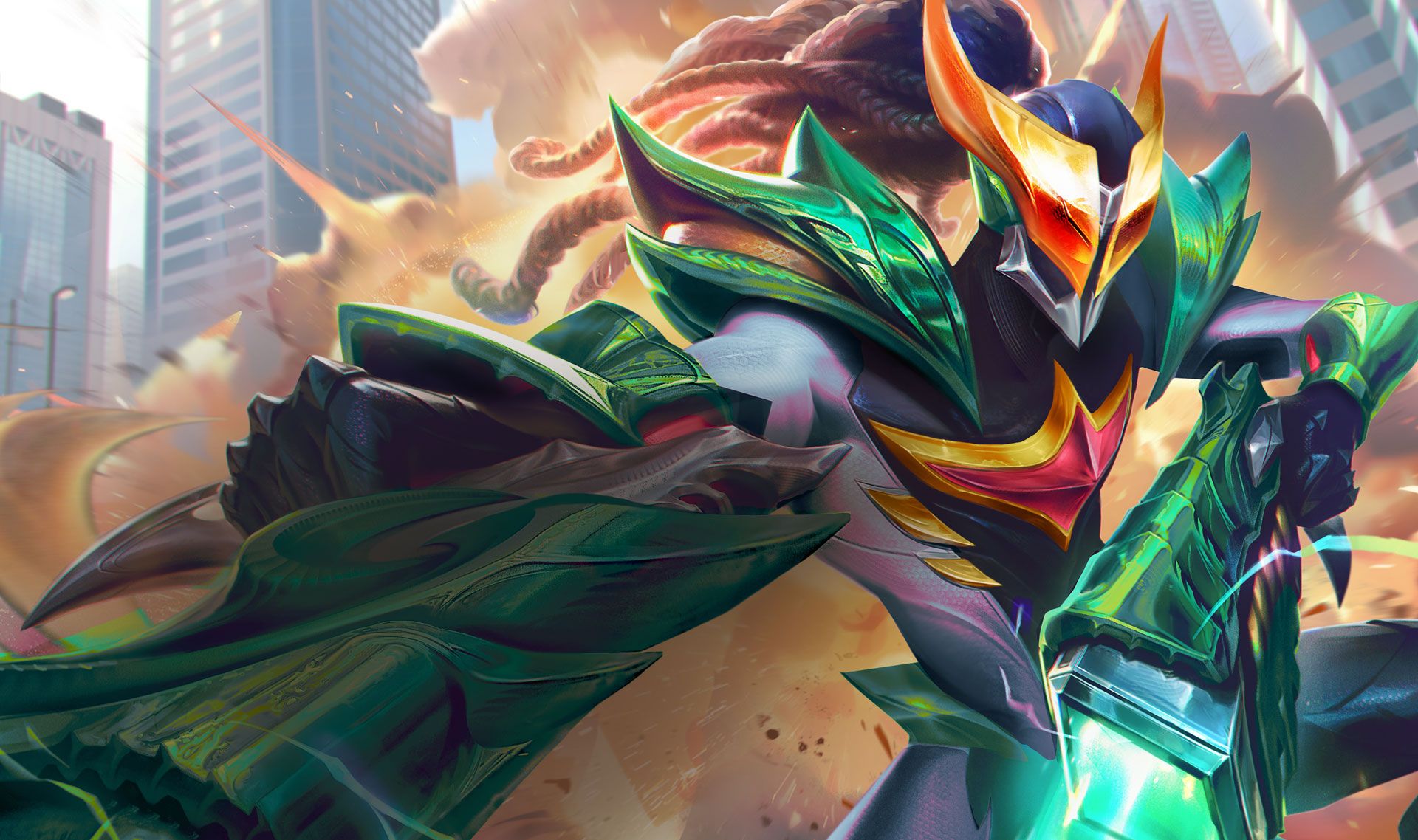
Lucian was a solid unit with a simple ability with a novel Mana-gaining hook, but where this champion took off was with the number of exciting Power Ups he had: Solar Breath, Drift Duo, Hero’s Arc, Max Arcana, Mech Pilot, Midas Touch, Over 9000, Power Font, Shadow Clone, Sky Piercer, Classy, Critical Threat, Storm Bender, Pursuit, Magic Expert, Mage, Killer Instinct and Keen Eye. Some were straightforward, like Power Font (more Mana) or Critical Threat (spell crit). Others completely changed how you played him.
Pursuit Lucian leaned into long fights and mana regen, dashing around the battlefield.
Max Arcana Lucian had you pursuing an infinite scaling reroll fantasy
Mage Lucian had Lucian casting twice which meant even more mana refunds and thus, more casts!
Mech Pilot Lucian had you committing fully to the Mech vertical, padding stats with items like Thief’s Gloves.
Drift Duo Lucian unlocked reroll Mighty Mech strategies without needing Yone and had a cool thematic (Senna and Lucian reroll).
Many of Lucian’s options felt meaningfully different and would give him power in ways that weren’t directly tied to more of a stat, making you want to play them differently, too. But for every Lucian, there was a simpler Gather Force Jinx or Stretchy Arm Gangplank option, where one Power Up felt like the go-to default option. When a Power Up like Gather Force Jinx was the perceived best and only option, it also led to the set feeling less flexible overall—which was not an intention of a source of power that was meant to be removed and reapplied.
Lastly, there’s something to say about the fun Power Up options we had this set, from Fan Service to Hat Trick. Some of TFT’s best moments are when we lean in on our shared passion for our champions, or when we lean in on the absurdity of TFT to make simple things fun! We’ve been thinking about this a lot when we look at new Augments for our next set, and mechanics for sets to come!
Flexibility
Oh boy, the big f word: Flexibility.
So, let’s talk flex play. K.O. Coliseum was not as flexible of a set as we would like, and while we worked to improve flex play throughout the later patches, we failed to hit the mark for many of our competitive players.
But, let’s take a step back and define flex play. For our purposes flexibility is a playstyle that allows you to play around what you hit in your shop, your early items, and your Augments. Holistically, it is playing around what the game gives you. While we think about flex play as what should be the ideal playstyle for our highest level of play, it is important to note that the other end of this spectrum, forcing, should also be a somewhat viable approach for casual play. But at the end of the day, both playstyles just want to win.
Now to go back to where flexibility missed in the Coliseum. Situations like hitting three copies of a Yuumi in a shop and not wanting to play a Yuumi 2 because you didn’t already have 5 Prodigy or 5 Battle Academia highlighted just how pre-planned and rigid comp preparation needed to be. Much of this rigidity came from the power of the set’s traits, but a lot of it also came from hyper-optimization of the many variables K.O. Coliseum had. The biggest contributor to these variable was the Power Up mechanic, which added another layer of choices to make with limited resources on top of everything else in a regular set.
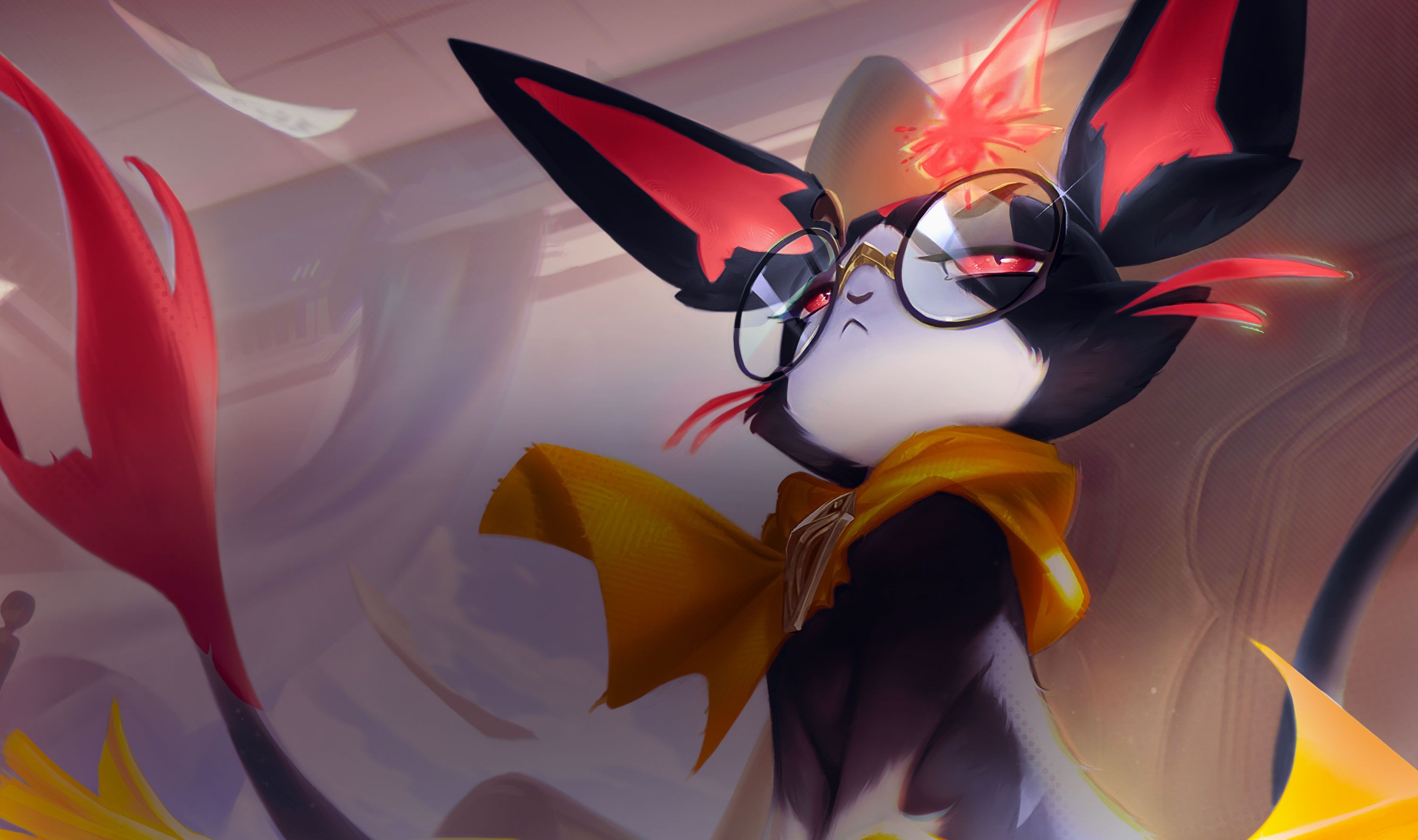
Let’s dive into some examples to show how this played out. Yuumi’s ability required ramping from Mana via Prodigy, and the true damage component needed Potential from the Battle Academia trait. This design dictated a narrow commitment to playing Yuumi that needed to be decided in the early stages of the game where you could hold on to vital 1-costs like Ezreal, Garen, or Syndra more easily. Similar cases could be seen with things like Monster Trainer before we reworked it (more on this later). You’d need to field one of Lulu’s monsters early, so you could be with the curve on leveling it up. We’d also see gameplay dictated by optimized uses of early Artifacts. For example, Luden’s Tempest had a singular (and solved) holder in Ahri, so greatly warping her power that we were forced to temporarily disable it to restore power to the champion without making the combo a guaranteed win (it already was close to that). Finally, some rigidity came from our Power Up system which would have you commit to scaling (and fun) fantasies like Over 9000, Max Vitality, etc.
At the end of the day, there were a lot of smaller design decisions that made the set less flexible at higher levels of play, and while in isolation many of these design choices had fun outcomes (leveling a monster was fun, stacking random stats with a Power Up is also fun), together they overcrowded true flex play.
So, as we look to the next set, we still want to index on fun and unique hooks, but we’re taking extra care to make sure our traits feel viable at lower breakpoints, allowing for wider gameplay, and our champions feel viable without deep and specific investment. We can also absolutely guarantee that there will be far more flexible champions in the next set.
Sharp and Meaningful Design: Reflections on Artifacts
What happens when an Artifact’s design is so sharp that you have to click it, or you can’t play the unit it single-handedly enables? Well, in the worst case, when the Artifact is that sharp, it’s gotta get cut, as was the case with Luden’s Tempest Ahri—but this hasn’t been our first awkward run-in with Artifacts.
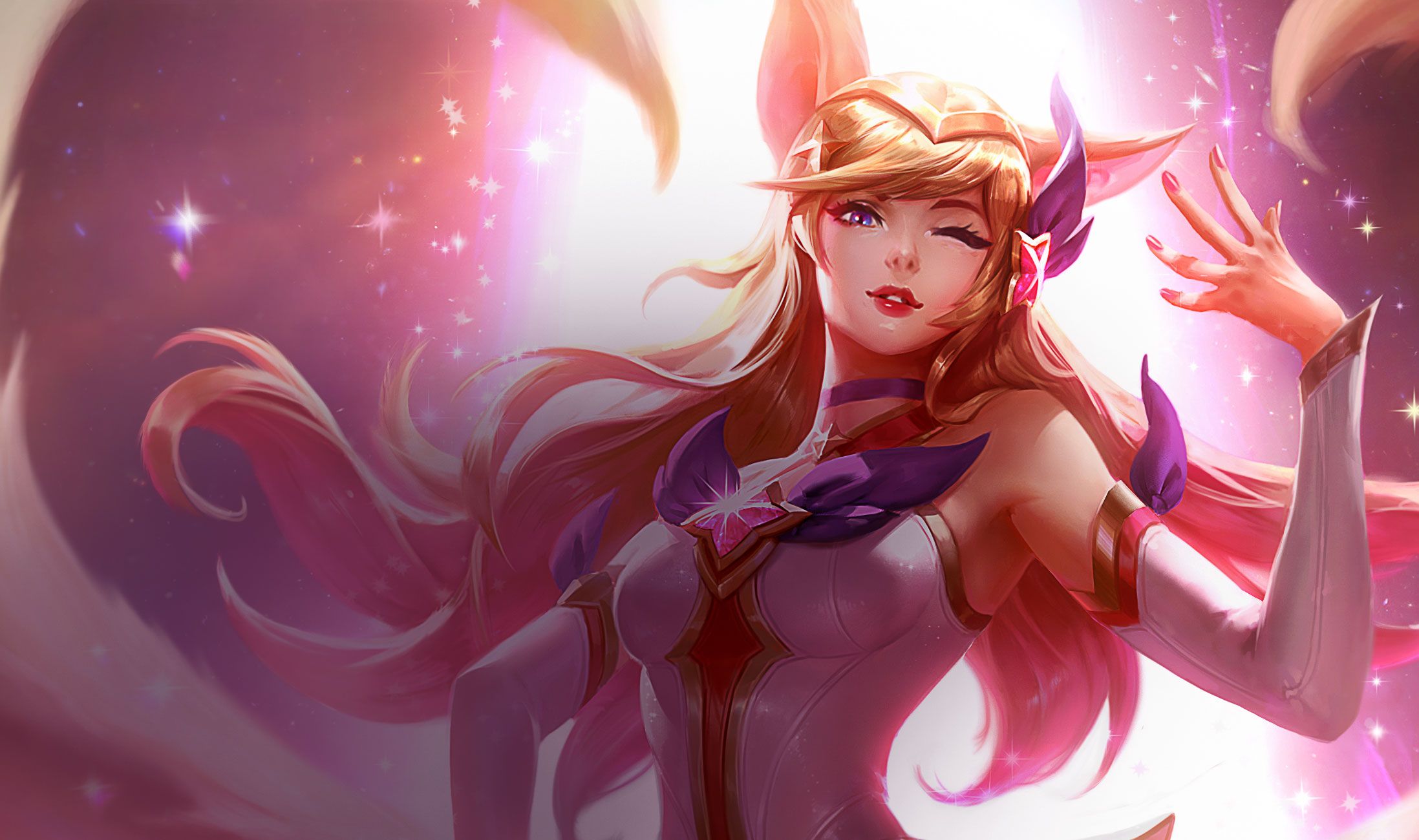
With every new set there are new Artifact combinations that we inevitably have to respond to. That’s partly by design: Artifacts are meant to be sharper, more champion-focused items that enable specific fantasies. In Into the Arcane we had Rapid Firecannon Nocturne, and in Cyber City we had Blighting Jewel Fiddlesticks. In both those situations we responded by nerfing the unit, but when we did, those units became borderline unclickable.
For example, once we got Artifact Blender Nocturne (Nocturne with a range extension Artifact or more) balanced, base Nocturne was unclickable, even if you saw three copies of him early on in a shop. If you’ve been following along with our last section, this goes against a flexible meta. So, we’re slowly (and slightly) changing our philosophy around Artifacts that prioritizes the champion’s viability without the Artifact over the Artifact.
Instead of buffing or nerfing a champion around an Artifact with simple number adjustments, we want to approach the two variables (the champ kit and Artifact) with design changes that make both their power ceiling and power floor closer together, with and without an Artifact. While doing so, we have a secondary goal with Artifacts: to further establish their power budget between core and Radiant items.
If we accomplish both of the above, we’ll have also made Artifacts slightly less sharp, allowing them to be better, albeit less specifically so, on more of our champions. This way if you are offered a choice of three Artifacts later in the game, at least one of them should work in your comp. This isn’t to say we’re going to nail Artifacts perfectly next set. Each set brings a ton of variables that interact with our more narrow and powerful Artifacts in different ways, and the next set will in no way be immune to this fact. But we will be more ready to adjust Artifact design, and we even see a future where cycling through which Artifacts are live for which sets could become the status quo.
Bugs, Ambition, Content, and the Pioneer Tax
K.O. Coliseum was one of our largest sets in terms of sheer content volume, and while we created a ton of new content that we are proud of, it also came alongside a Pioneer Tax (the cost of creating something new) impacted by shifting timelines and resources.
First, the content. New champions, traits, and Augments all met a set mechanic with more possible combinations than ever before. With that, we had a lot more to test than past sets. A lot more combos to QA, a lot more bugs to chase down causes for, and many more novel situations that we couldn’t possibly account for.
But past the sheer number of content combinations we were also testing a new development process meant to make set creation smoother and more sustainable over time. The idea was simple: shift more of our planning and decision-making earlier in the pipeline, so we could give each stage of development more breathing room. But putting that into practice meant compressing timelines in the short term. We had to move many of our key processes, and the one that was the most impacted was our finalization phase. This showed up in less jam days for the team, vital days where we play a set on repeat, constantly gathering feedback, data, and correcting bugs.
For K.O. Colisseum, it seemed like we were constantly behind on bugs and when we thought we fixed one, a higher impact one would pop up. It sucked, we felt bad, we worked hard, and we still didn’t meet the standards our players or ourselves had. So what can we say about the future? Well, to start, we have much more finalization time for our next set, and are planning plenty of finalization time for all sets moving forward. Even as I write this now, the next set has already surpassed the total number of jam days we had for K.O. Coliseum. But past jam days we’re also onboarding a new testing team that should be gradually improving in process and effectiveness as time goes on. As always this isn’t to say the next set will be bug free; the more ambitious a set is and the more new ground it explores, the more we have to learn to match its scope. That being said, we can say that we are taking learnings from this set seriously, and we’re building in additional support structures to make sure that our next sets are more stable.
To add more color on the Pioneer Tax, complexity, and even our earlier section on flexibility, let’s hop into a quick case study with Lulu.
Lulu: A Case Study for Complexity
Now to talk about one of the bigger trait experiments for K.O. Coliseum: Monster Trainer. Monster Trainer at its core was an exciting fantasy: pick your favorite monster, level it up, and watch them carry your team to success. But, Monster Trainer also ended up being a lesson on picking the best design goal and making it shine.
Trainer shipped as a threat-like trait meant to provide utility and scaling combat power. These goals didn’t mesh well, since no one was interested in fielding a weaker utility champion and, likewise, pushing so much power in utility meant there wasn’t a lot of design space for the Level-Up component to feel truly transformative. In the future, it’s important to identify early on what space our content fills within the set, and make sure the designs have the space to truly fill those needs.
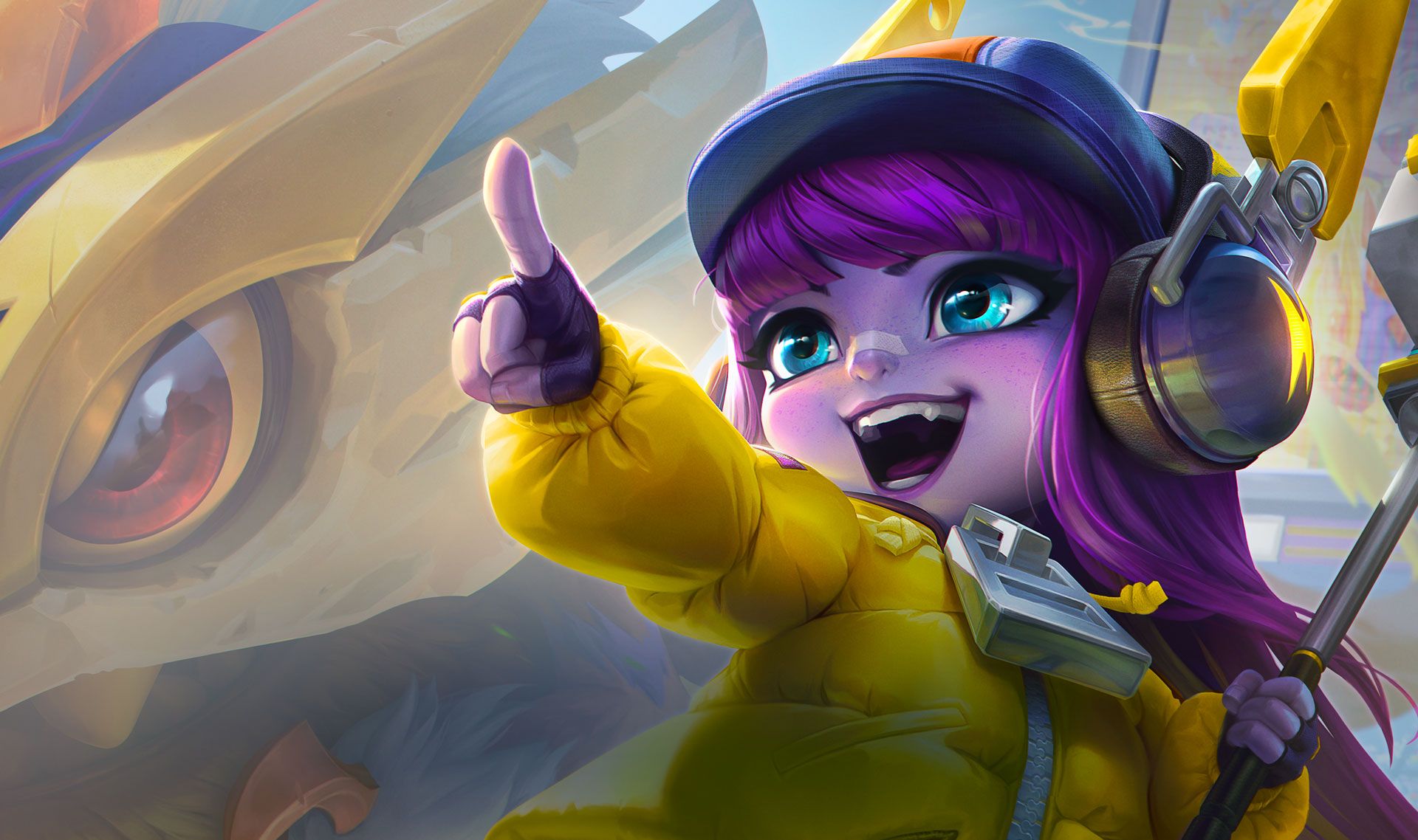
Monster Trainer was also the source of some hard-to-squash bugs, such as the infamous Lulu Carousel bug, that eventually led to the permanent disabling of her availability on Carousel rounds. These bugs feel bad to ship to players, but ultimately came as a result of us pushing the systems in TFT to their limit and exploring what is and isn’t possible (and how/if we can make the impossible a reality). We tried something new, it was hard, and it led to mistakes—classic Pioneer Tax. With our tight timeline, it’s tough to catch all of these, and missing them leads to prolonged periods of bugs. We should have done better at being transparent with players and ourselves to minimize the risk of the bug re-appearing with our attempted fixes.
Finally, all this led to the end-state of Monster Trainer, where their leveling mechanic and unique bag sizes were removed. We knew those changes would disappoint players who loved the original vision, but they helped us solve the bugs and flexibility issues that were holding Monster Trainer back. These tough decisions resulted from misaligned identities and a missed experimentation with trying to support three champion bag sizes with one original champion. While it was an admirable dream to have one Kog’Maw, one Rammus, and one Smolder player on their Training adventure, the amount of invisible rules and subsequent player manipulation meant the information tax was too high. Lulu and Monster Trainer were awesome ideas, but they needed more polish and focus on the player experience to truly deliver on the fantasy. We won’t have a Monster Trainer-like champion in the next set, but we also won’t let this flawed experiment push us away from innovative designs in the future.
Prismatic Traits Reflections
Speaking of new experiments, with K.O. Coliseum we tried a new way to activate Prismatic traits. Instead of just requiring a certain amount of a trait, we also required a quest to be completed.
This was an experiment worth doing. There is still potential to explore with Prismatics that goes beyond Emblems. Exploring this space also allows us to get more creative with the output of the Prismatic trait, making big cinematic moments like the Crew finisher. Overall though, we’re not going to call this a complete success. Sure it solved problems caused by too much access to Crests, Crowns, and Wandering Trainer, but we won’t be repeating this for EVERY trait in the future, just reserving it for some of the more spectacle focused moments. For our next set we’re sort of splitting the difference using a new mechanic to synergize with the ways you’ve traditionally hit Prismatics that should feel more intuitive while maintaining that rewarding appeal of K.O. Coliseum’s Prismatic power.
Lastly, their frequency. Interesting enough, the actual rate of hitting Prismatic traits hasn’t shifted that much since Cyber City. It’s currently sitting between Cyber City and Into the Arcane, which means we’re not dealing with these being harder/less obtainable to get on paper, but instead, their perception is that they are far harder to hit. We’ve got a couple theories around this, but the leading one is that when activation feels more complicated, players interpret that as less frequent access, but the set’s still live for a bit, so you still have a shot at chasing them before we’re on to the next one!
Roles Revamped Reflections
Hey Tacticians, Giovanni Scarpati, Game Designer and lead on Roles Revamped here to chat about just that. Roles Revamped was a quieter, yet very impactful experiment with the goal of opening up more design space in our champions that could allow us to better balance and define melee carries, Fighters, Tanks, etc. But the project as a whole entailed a few more things:
Mana Regen as a Stat: This just went over well. It was an intuitive change, and a long time coming. We'd already been using Mana per Second as a stat in TFT on a few items and traits historically, and its value as a core stat was just healthier for TFT than starting Mana because it represented consistent power over combat instead of burst at the start (which notably had a larger impact on combat pacing). It’s also so nice that Attack Speed is now not the best stat on backline casters! Finally!
Tank "Aggro": A simple rule that Tanks win 50/50s on choosing your next target allows players to place melee champions in the front row instead of the second. Another free win. You mean I can place a melee unit within melee range of enemies now!? Yes, yes, we do, and you should be doing that in many scenarios.
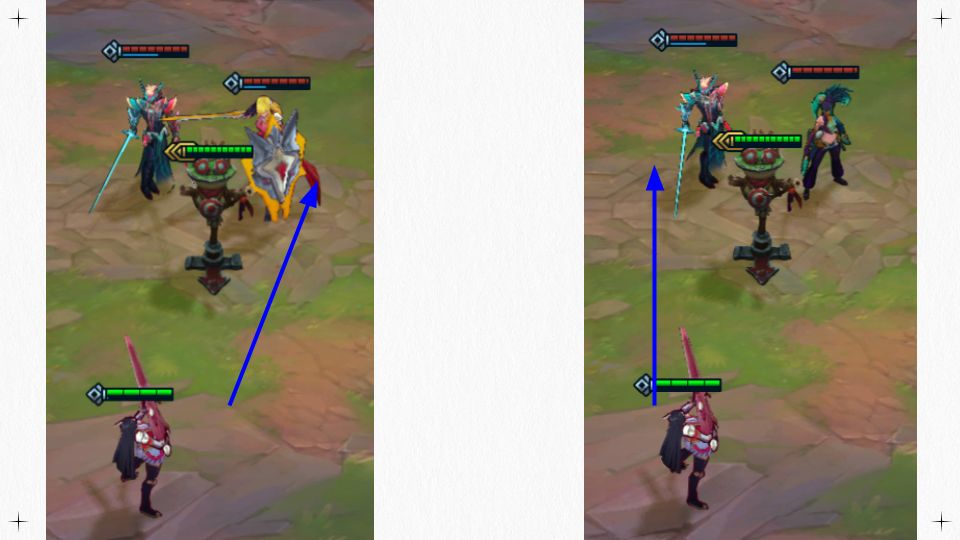
Updated Roles: The changes to roles are interesting because they were supposed to be impactful (solving edge-case problems) while also being invisible (didn't change the way you played TFT too much). Surprisingly, despite these concepts being at odds with each other, this has been rather successful! Gone are the days of drain tanks (where you stacked a bunch of Omnivamp on a starred-up Fighter). This allows us to design Fighters more often in TFT knowing they're a bit safer. And now dealing chip damage to the enemy backliner isn't a bad thing for you to do! Huzzah!
That's not to say we landed all the stats perfectly on release... and there's Assassins which we're still cooking on. But overall we feel this was a positive change for TFT and we'll continue to tinker in this space to find exactly what good looks like for each of these roles. As our comfort level rises, we'll be cooking up even more cool stuff related to these changes!
Lastly, a bit on the reception for Roles Revamped. As we mentioned with its announcement, we wanted this to be a largely invisible and intuitive change that made itemization easier and opened up design options for melee carries in the future. Well, that future is almost here and the verdict is in. The overwhelming majority of our Platinum+ players were aware of Roles Revamped, whether it’s how Tanks function or the new Mana regeneration stat—that’s a huge win for a system buried in an inspection panel. And for our Unranked through Gold players, even though they were far less aware, they reported having a far better understanding of what units do based on their roles and what items may be good on them. We’re super thankful for K.O. Coliseum being the testing grounds for this system, and we’re excited to share the new designs we can cook up in future sets at a future time!
The Style of an Anime Tournament
We know theme is super important when players are trying out a new set. So we have Tori Ero, Gameplay Art Director, and Issaac Wood, Art Lead for K.O. Coliseum, to talk all about it. We’ve had 15 sets of experimenting with themes, some successful for most of our players, some incredibly resonant for smaller portions of our players while neutral for others, and others falling short for the bulk of our players. At the end of the day, we know not every theme will resonate with every audience, but we also see exploring new themes as a necessity for keeping TFT fresh. So whether the Anime Tournament style of K.O. Coliseum was resonant for you or not, just know that we will continue to experiment with a mixture of aesthetics and themes in the future!
As for K.O. Coliseum, the set’s theme and visual style was met with mostly positive praise. As a team, the vast majority of us identify as anime fans or … weebs (hold for shock), which is awesome, cause it turns out, many of our players like anime (hold for more shock). But being anime fans also makes our players tough critics. Most of you know your stuff. And for some, the execution missed, with key complaints around the aesthetic matching fighting games instead of animes, or being too old-school of a look. All fair critiques (and totally not internalized as being called old).
One of our big goals for K.O. Coliseum was to bring the straight-out-of-anime look to our beloved characters in look, but especially in gameplay. This was our first-ever full style pass across every champion in a set. That meant new shaders, new outlines, and a ton of iteration to get the look right, make sure it didn’t interfere with gameplay clarity, and make their abilities resonate in a similar style. Every champion had an anime pop to build out their anime moment when you popped a Power Up fruit on them.
But what made the anime style truly stylish? Here, the shader work was pivotal. Every champ was touched, and the new outline tech became the final puzzle piece to really hit “anime.” That tech isn’t one-and-done either—it’s something we can bring forward into future sets. But beyond the shader, we also delivered on some key traits to represent various anime archetypes. Here, Mighty Mech nailed that Robo/Mech vibe. Every unit had its bespoke colors, combining into one big, glorious mech. Jarvan is the drill that pierces the heavens. Karma is the spinning battle top—or that chainsaw style spell that continually slices things up. Those, combined with the existing Masked Justice skins for Lucian, Senna, and Yone, brought the trait’s striking color palette to life.
Our super power (or Power Up) in making all this happen is our team’s extensive anime knowledge. We’ve got sports anime superfans that have seen more ball sports on anime than I knew existed IRL, we’ve got shonen arc die-hards, and lil’ monster collecting fanatics to make sure each champion and origin feels distinct and lovingly crafted. All this from the shaders to the Monster Trainers was hard work that players noticed. For us, that made it a win worth celebrating—and a style approach we’d love to revisit in future sets when the theme calls for it.
One last thing to mention: the Top Four Ceremony. We’ve always wanted Top Four to feel like more of a win, because it is—I mean, you ARE guaranteed to +10 LP and a huge sigh of relief if you just scraped a 4th place at single-digit Tactician Health. Being set in an Anime tournament was the perfect time to bust out a thematically resonant Top Four ceremony, so with the help of our Whiskers-inspired visual style, we did just that. And the ceremony was a huge success, with the vast majority of players saying they liked it, and a large portion saying that it made Top Four feel more like being a winner. So, with our next set, we will be bringing the ceremony back, but with a more Evergreen/set-agnostic style, so keep an eye out for it the next time you take one of the four big W spots in a lobby.
At the end of the day, K.O. Coliseum gave us new tech, new style, and a memorable set thematic that drew upon our fandom of anime and League. Not everything hit perfectly—but the ambition and experimentation got us to the lofty goals of bringing TFT into an Anime Tournament. And whether you loved it, or are ready for something new (or both) we’re excited to keep cooking with wild and fun future themes.
Ao Shin’s Ascent Reflections
Hey everyone, Christina here, Product Lead on events, to talk about a Little Legend that reached great heights. We were beyond humbled by how many of you climbed, fell, dusted yourself off, and went for the Summit with Ao Shin’s Ascent. The mode peaked with as high as game hours as the Remix Rumble Revival, which is pretty cool because hours had to be accumulated by solo-play!
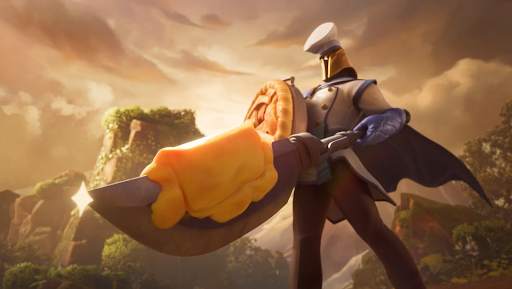
But we’re not really alone when we’ve got a trusty Guide at our side. Zoe, our most popular Guide, was also believed to be the most OP with her random loot drops. However, when we checked the data—and we did—Zoe wasn’t nearly as consistently powerful as Teemo (weird right?), with Soraka as a close second, across all their variants. I guess Zoe’s popularity is a tale as old as TFT—deep down, we cannot resist the risky highs and lows of absolute chaos!
Whether it was with Zoe, or Gwen, or even our shield slamming Pantheon, we were blown away by just how many players committed to climbing the Summit with twelve Guides to achieve the Guidemaster reward.
Results like the number of Summits the mode had, along with the positivity we’re seeing online, was really exciting for the team. Ao Shin’s Ascent was our first real crack at a PvE progression based mode, and we're both happy with the results, feel like we've learned a lot (more content! more challenging content!), and yet have a lot left to learn. We don't yet have solid plans for what we may next explore in a similar space, but if & when that changes, we'll keep you updated.
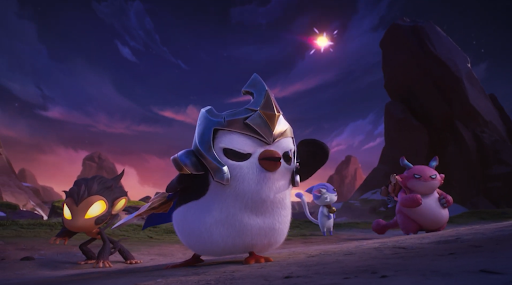
You made it to the Summit, and the end of the Learnings article! Congrats! These articles could never be written in a vacuum, so thanks to all of you who’ve been writing and sharing your feedback, because we’ve been reading it… a lot. We hope that it shows when we write long, long, long pieces like these. Your feedback is crucial in helping us achieve our shared goal of making TFT the best game it can be. On that note, we hope you see continued improvement in our next set and beyond. So until we see you in Runeterra, good luck and have fun.